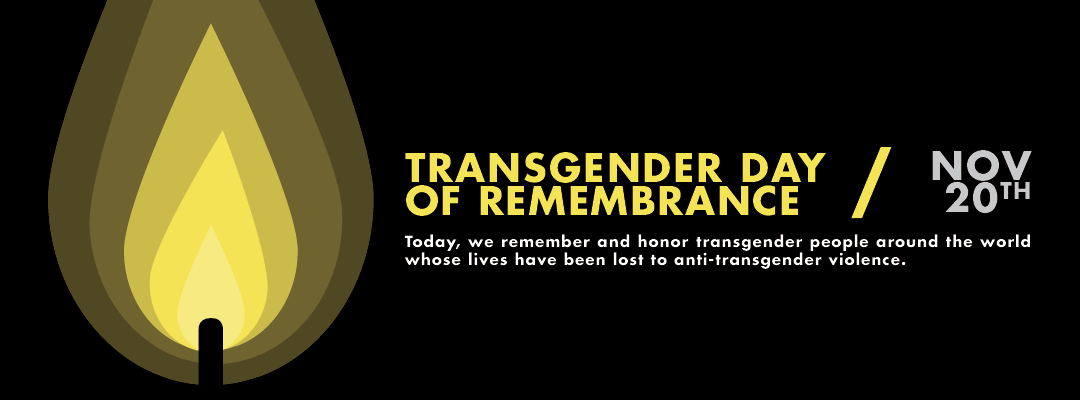Observing Transgender Day of Remembrance 2018
Today, November 20th, we are observing Transgender Day of Remembrance. Around the globe, transgender people are disproportionately subject to violence. Started in 1999 by Gwendolyn Ann Smith, Transgender Day of Remembrance (TDOR) began as a vigil to honor the memory of Rita Hester, a transgender woman who was killed in 1998. The vigil commemorated all the transgender people lost to violence since Rita Hester's death, and began an important tradition that has become the annual Transgender Day of Remembrance.
Smith said, "The Transgender Day of Remembrance seeks to highlight the losses we face due to anti-transgender bigotry and violence. I am no stranger to the need to fight for our rights, and the right to simply exist is first and foremost. With so many seeking to erase transgender people -- sometimes in the most brutal ways possible -- it is vitally important that those we lose are remembered, and that we continue to fight for justice."
Health care facilities and providers must speak out against violence and hatred, especially that which disproportionately affects transgender women of color in particular. This is a public health concern that should concern all health care providers. To date in the United States in 2018 alone, twenty-two transgender individuals have been killed.
Homelessness and poverty are a reality for much of our transgender community, and these concerns leave folks even more exposed to violence that may result in death. According to the Human Rights Campaign, 84% of this year’s deaths were people of color, 64% were under the age of 35, and 55% lived in the southern part of the United States. All but one murder was of a women.
Around the world, we also see grievous losses in our community that leave us asking what we could have done differently to support our transgender friends, family, colleagues, and community members.
As health care providers, we can start with education. We must educate ourselves on how best to care for transgender patients, how to recognize risk for violence in the lives of our patients and clients, and how to reach out to those who we know are in pain and are suffering due to the bias that they might face each and every day. We must be aware, if a patient comes to us even for an unrelated issue, to recognize risk factors for human trafficking and other violence. Violence for transgender people can come from strangers, but statistically, it is more likely to come from within an intimate partner relationship.
To our transgender community, we must say: You will not be erased. We must work now to stop the tide of brutal murders and hate crimes, and to show warmth and acceptance. By reaching out, making those connections, we demonstrate that transgender people are worthy and valuable, and that they are not alone in their fight for safety, health, and justice. We must also use our knowledge and power help to create community and policy-level change, to ensure that these statistics decrease each year and that hate does not extinguish the bright flame of even one more transgender person.


